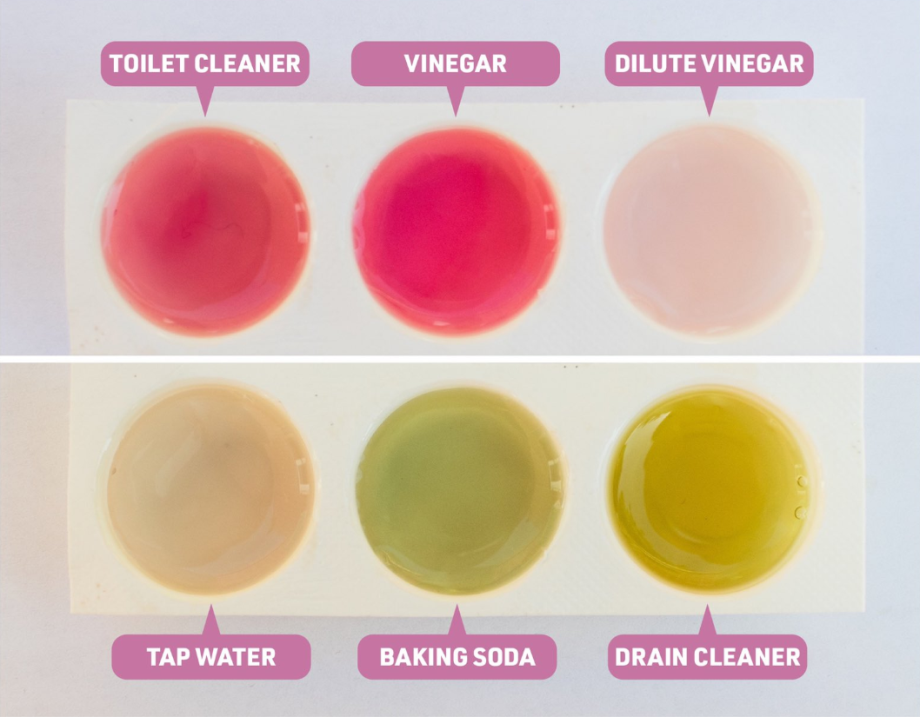Practical chemistry at home: garden pH indicators
09 June 2020
Hints and Tips - 4 minute read
Andy Brunning, OCR Chemistry Subject Advisor
 With it looking like many students will be continuing their learning from home until later in the summer term or even September, practical work as we know it isn’t possible right now.
With it looking like many students will be continuing their learning from home until later in the summer term or even September, practical work as we know it isn’t possible right now.
In my blog, I take a look at how you can get your students doing some practical chemistry at home and how this can be adapted to get students at both GCSE and A Level thinking about practical work in a constructive and engaging way.
We’ve already looked at examples of practical work students can do at home for physics and biology. For chemistry, students can make use of what’s growing in their garden and what’s stashed in their kitchen cupboards to investigate acids and bases.
Since lockdown started, chemistry teachers, technicians, and enthusiasts have been sharing pH indicators they’ve made from flowers in their gardens on Twitter following the #GardenIndicators hashtag.
Making a pH indicator
The method to create an indicator is quite simple: just take a few flower petals and soak them in a small amount of boiling water. In the interests of causing minimal disruption to your garden displays, this can be done after the petals have dropped.
After soaking for about 10 minutes and filtering the solution you’ve made - kitchen paper works well as a home alternative to filter paper - you are left with an indicator solution. You can then use this indicator solution to test substances commonly found in the kitchen, including vinegar, tap water, and baking soda solution.
Usually, the best results are seen with flowers that contain pH-sensitive anthocyanin pigments, with those containing primarily carotenoid or betalain pigments giving subtler variations.
An example of results from an indicator I made is shown below:

Using this activity with students
Before getting your students to carry out this activity, make sure they’re aware of garden plants which may be poisonous. The Woodland Trust has a rundown of common poisonous plants on their website.
This activity can be used in a number of ways with students:
- Using an indicator to determine the approximate pH of particular substances.
- Carrying out a risk assessment prior to making an indicator. This should include consideration of any potential hazards relating to the plants used
- As a platform for a research activity into the chemistry behind the indicator – which compounds are responsible?
- Using an indicator they’ve made in a makeshift titration to determine the concentration of vinegar (using a modified version of the CLEAPSS microscale titration procedure).
- You could even get students to work out how they could carry this out using only the materials they have at their disposal at home.
Share your results
You could compile the results for different indicators from your students to compare and determine which flowers are most effective.
For A Level students, this could lead into a discussion of the specific compounds and the chemistry behind colour changes, a detailed discussion of which can be found here.
You could also share your students’ results on Twitter using the #GardenIndicators hashtag. Do you have additional ideas for activities relating to garden indicators? Or have you tried any of the suggested activities successfully? Let us know in the comments below.
Stay connected
If you have any queries or questions, you can email us at science@ocr.org.uk, call us on 01223 553998 or Tweet us @OCR_Science. You can also sign up to subject updates and receive information about resources and support.
About the author
Andy Brunning - Subject Advisor - Chemistry
Andy joined OCR in September 2017 as the Subject Advisor for A Level Chemistry. Before joining OCR he worked as a chemistry teacher in Bournemouth and Cambridge, and is particularly interested in context-based teaching approaches. In his spare time he enjoys photography, graphic design, and playing the guitar.